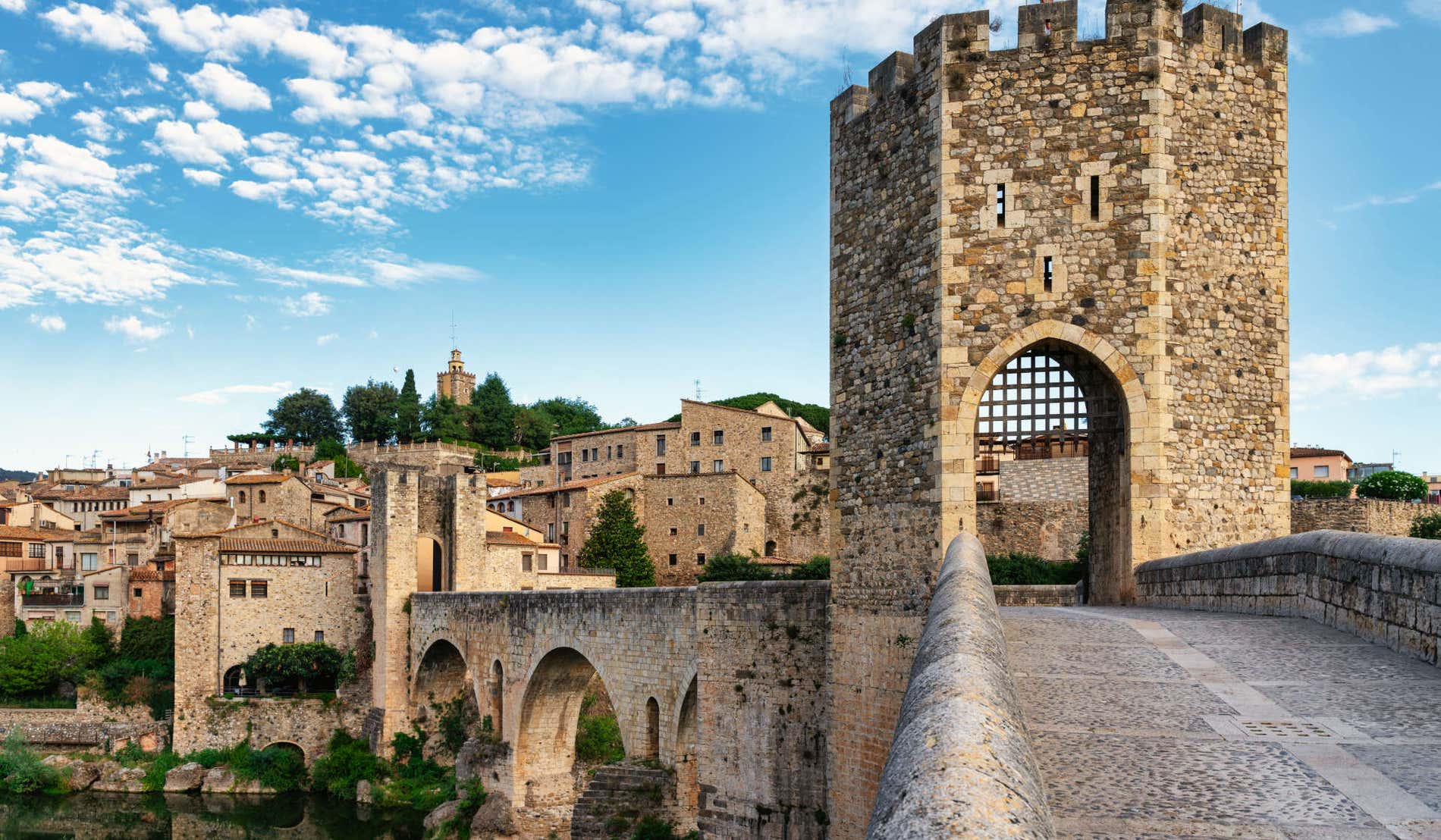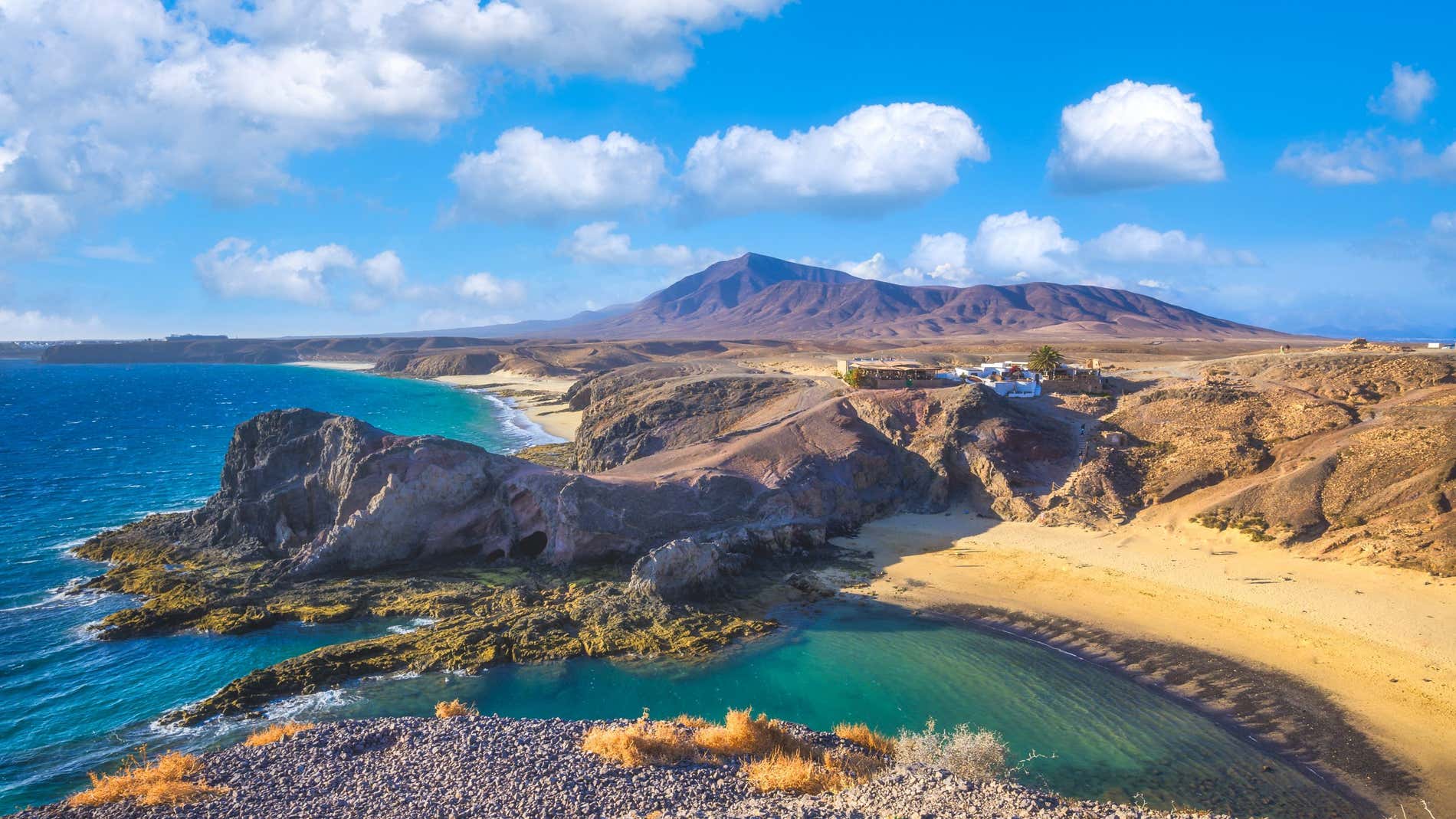What to Do in Tenerife: 20 Ways to Enjoy an Island Paradise
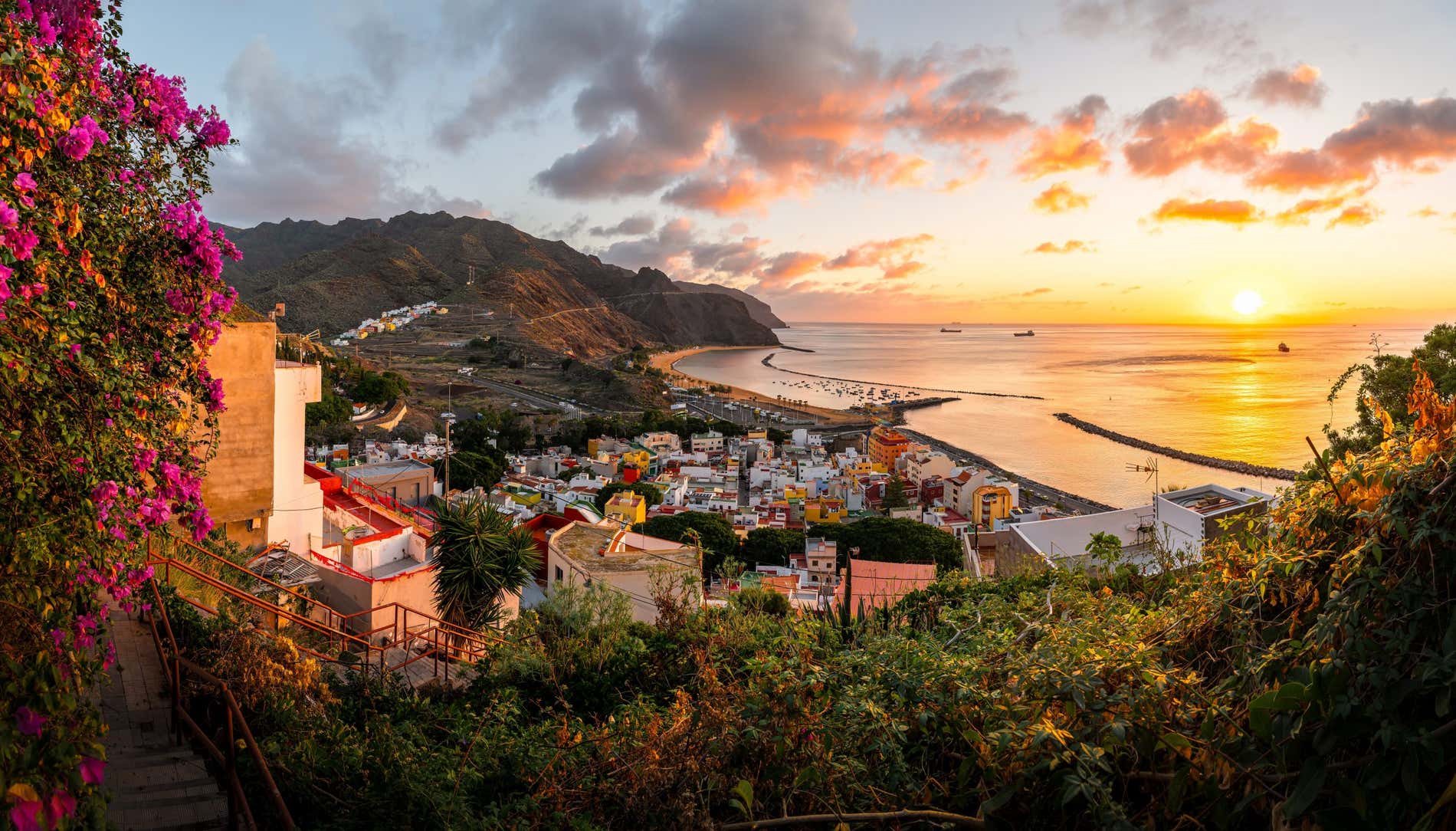
Tenerife is the largest of the Canary Islands and is famous for enjoying sunny weather almost 365 days of the year. While Tenerife is a perfect place to spend a few days enjoying the sun in paradise, there’s much more to it than that. Today at Civitatis, we’re going to explore the top things to do in Tenerife. In our post, we’ll cover everything from its charming villages to exploring its natural beauty at places such as Teide National Park to wine tasting. Discover why Tenerife is still somewhat underestimated as a tourist destination!
But first, let’s run through some quick facts about Tenerife so you know what you’re getting yourself into:
What to Do and See in Tenerife
1. Explore Teide National Park, Home to Spain’s Highest Peak
Teide National Park is a must-see when visiting Tenerife. This breathtaking UNESCO World Heritage Site is home to Mount Teide, Spain’s highest peak, towering at 12,198 ft (3,718 m). As an active volcano, last erupting in 1909, Mount Teide gives the park its dramatic, otherworldly landscape. Volcanic craters, vast lava fields, and striking rock formations create a rugged, awe-inspiring terrain that’s unlike anywhere else.
There are lots of different ways to visit Teide National Park with Civitatis. See below some of our favorite activities!
- For the physically active: Teide National Park Free Walking Tour.
- For the adrenaline-seekers: Teide National Park Buggy Tour.
- To see the beautiful night sky: Teide Stargazing Experience.
- To reach the summit: Teide Cable Car + Summit Hike.
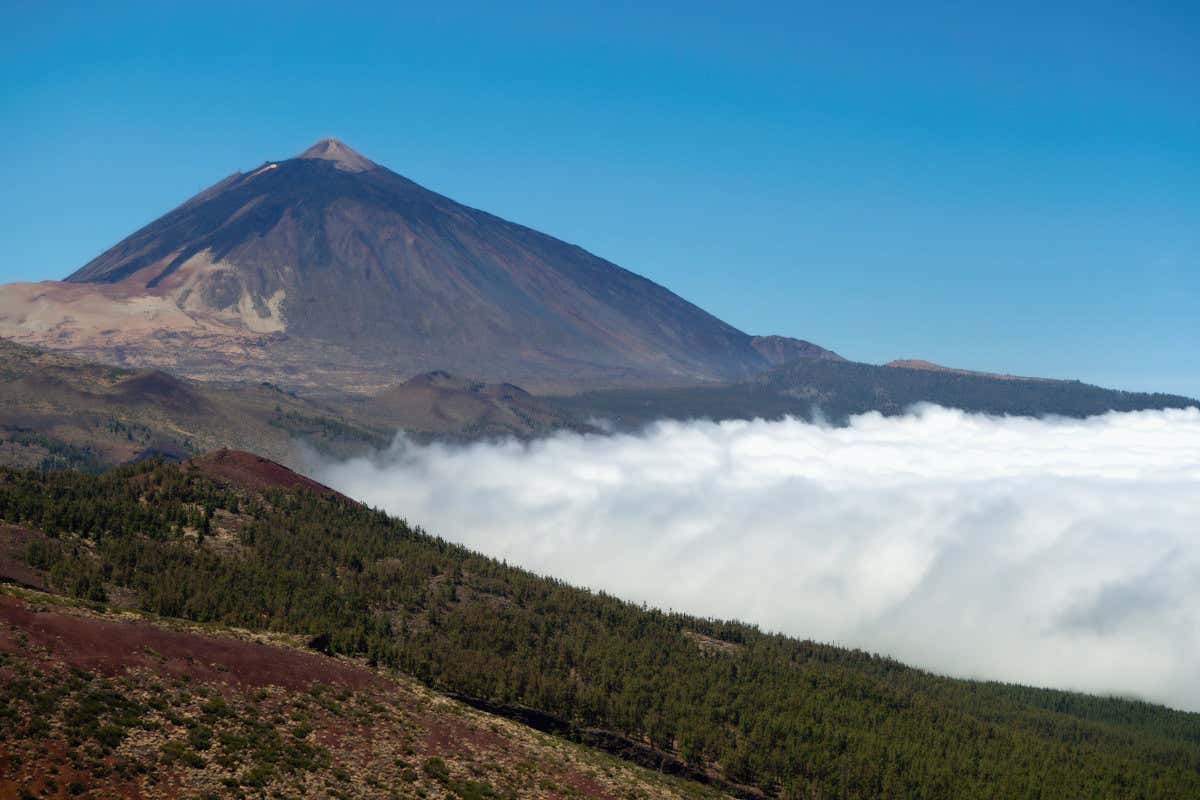
2. Visit Santa Cruz—Tenerife’s Capital
Santa Cruz de Tenerife is the island’s capital, located on its north-eastern coast. The city has a great buzz to it, with lots of shopping, entertainment, and food options to choose from. It’s also a great spot to catch a theater performance or concert, so check out what’s on when you visit!
Santa Cruz has a history spanning 500 years, having been founded in 1494. Before long, the city became an important port for trade between Europe and the Americas. Over the years, the port was subject to pirate raids and, famously, the Battle of Santa Cruz de Tenerife, during which the Spanish fought off the British invaders.
To gain a deeper insight into Santa Cruz’s history, definitely check out this free tour of Santa Cruz. On this tour, you’ll make your way around the city’s most important landmarks and locations. For us, a highlight of this tour is the Nuestra Señora de África Market—a really cool, bustling market with lots of fresh food and bars, all housed in an unusual, Moorish-style building.
For the best views of the city, we recommend booking a ticket to the Palmetum. This botanical garden is home to hundreds of exotic palm species and lush greenery, but the real highlight is the jaw-dropping, panoramic view of the capital. From the gardens, you’ll enjoy a fantastic view of César Manrique’s Maritime Park, the auditorium of Tenerife, the 17th-century Castillo of San Juan, and the mountains of Anaga, all in one!
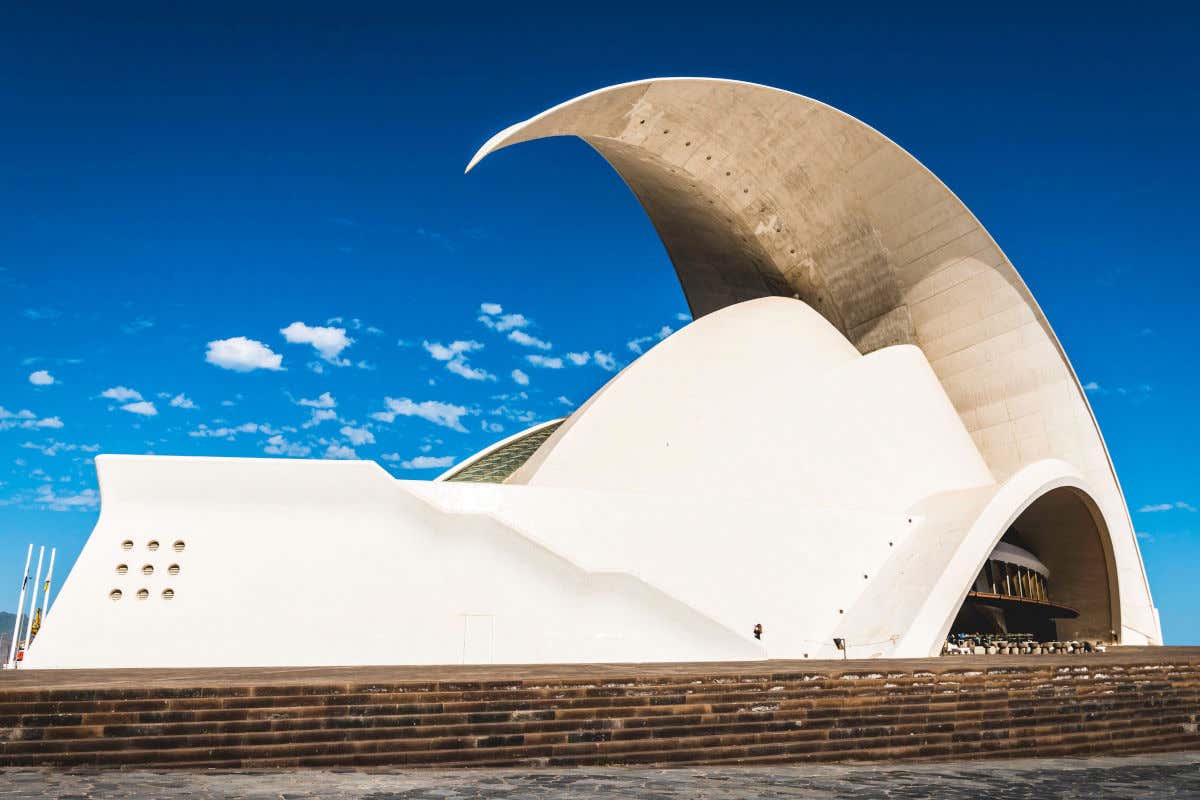
3. Make Your Way to San Cristóbal de La Laguna, A UNESCO World Heritage Site
Sticking to the north of Tenerife, another must-visit is the wonderful historic city of San Cristóbal de La Laguna, declared a World Heritage Site by UNESCO in 1999. Founded in 1496, San Cristobál de la Laguna was the original capital of the Canary Islands. The city is renowned for its well-preserved historic centre, featuring cobblestone streets, charming squares, and both Canarian and neoclassical architecture. The Cathedral of La Laguna and the Church of La Concepción are two outstanding examples of its architectural heritage.
Learn more about the city and catch all of its architectural highlights on this La Laguna free tour!
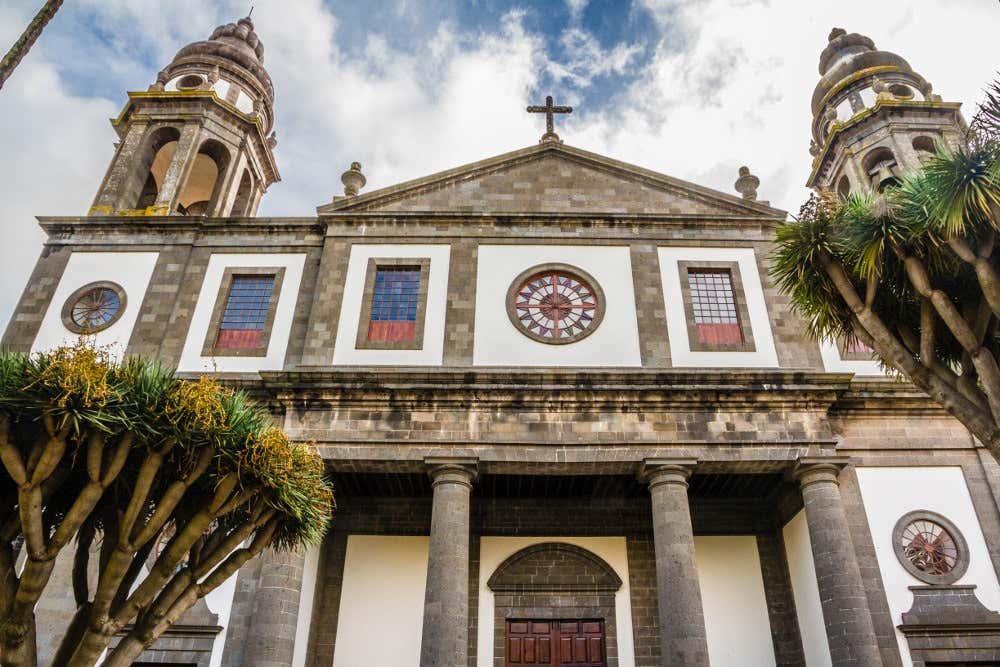
4. Go to Anaga, Home to the Best Hiking in Tenerife
Anaga, home to Anaga Rural Park, is a UNESCO Biosphere Reserve and a haven for hikers. This mountain range has peaks of around 3,280 ft (1,000 m) and ravines that descend over 1,000 ft (300 m) (nearly 1,000 ft). Within these ravines are lush ‘laurel forests’—home to dense vegetation, diverse wildlife, and a somewhat mystical, even otherworldly vibe. Some of the most popular hikes in the region are the Sendero de los Sentidos (Trail of the Senses) and the Bosque de Los Enigmas Forest of Enigmas. Both start from the Cruz del Carmen viewpoint and can be done without a guide. For a bit more guidance, check out this Anaga Rural Park guided hike, and delve into the legendary laurel forests while learning about this protected ecosystem.
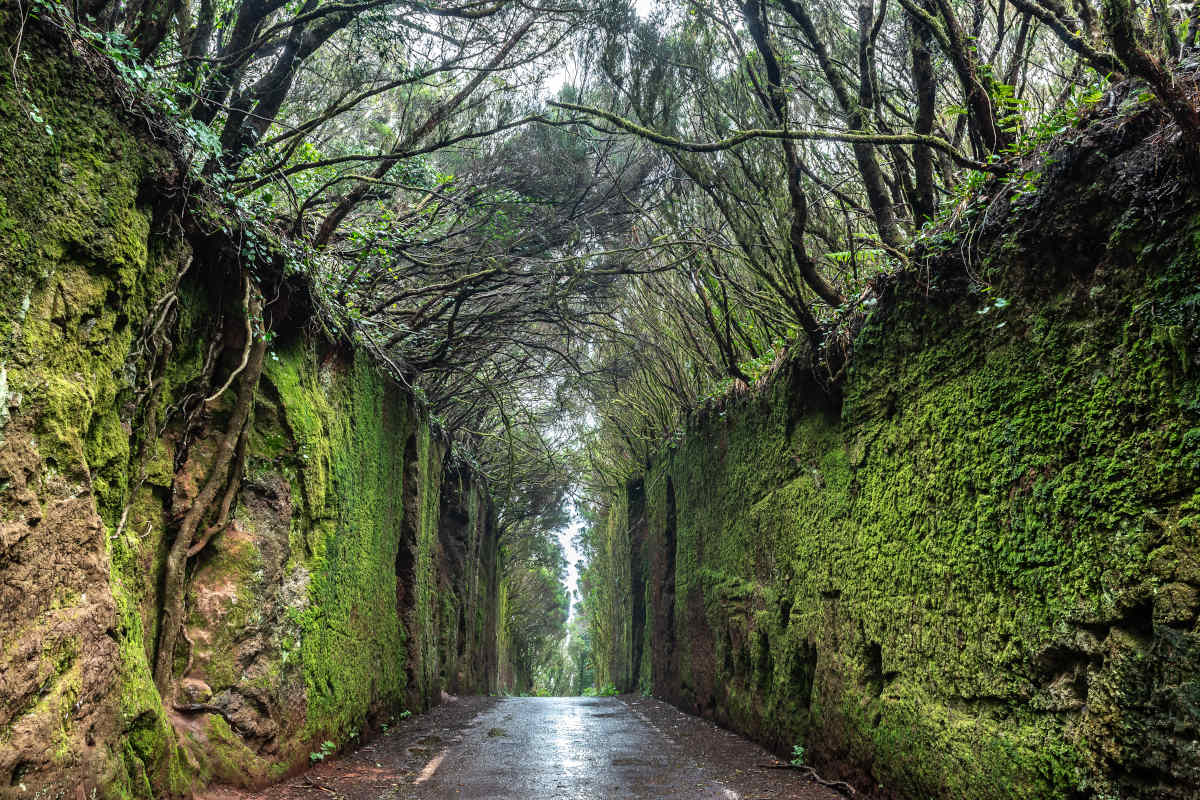
5. Drink Fine Wine at El Sauzal
If you’re interested in wine, you’re in for a real treat. Tenerife, and indeed, the Canary Islands as a whole, produce several wonderful wines. Most wines on the island are made using grapes from the lower portion of Mount Teide. Here, the flavor of the grapes is shaped by the volcanic soil (which provides ample drainage) and humidity. To get a proper flavor of Tenerife’s wines, head to El Suazal, home to most of the island’s top wineries. Here, you can have a go at this wine tasting at the Casa del Vino, a 17th-century Canarian building which features a vineyard garden and a wine museum. During your tasting, you’ll get to try a selection of tapas dishes, featuring locally produced honey, olive oil, and traditional pastries! Another option is the Monje Winery guided tour & tasting, during which you’ll enjoy a selection of wines and red wines accompanied by a variety of cheeses and incredible views of northern Tenerife’s coastlines and peaks.
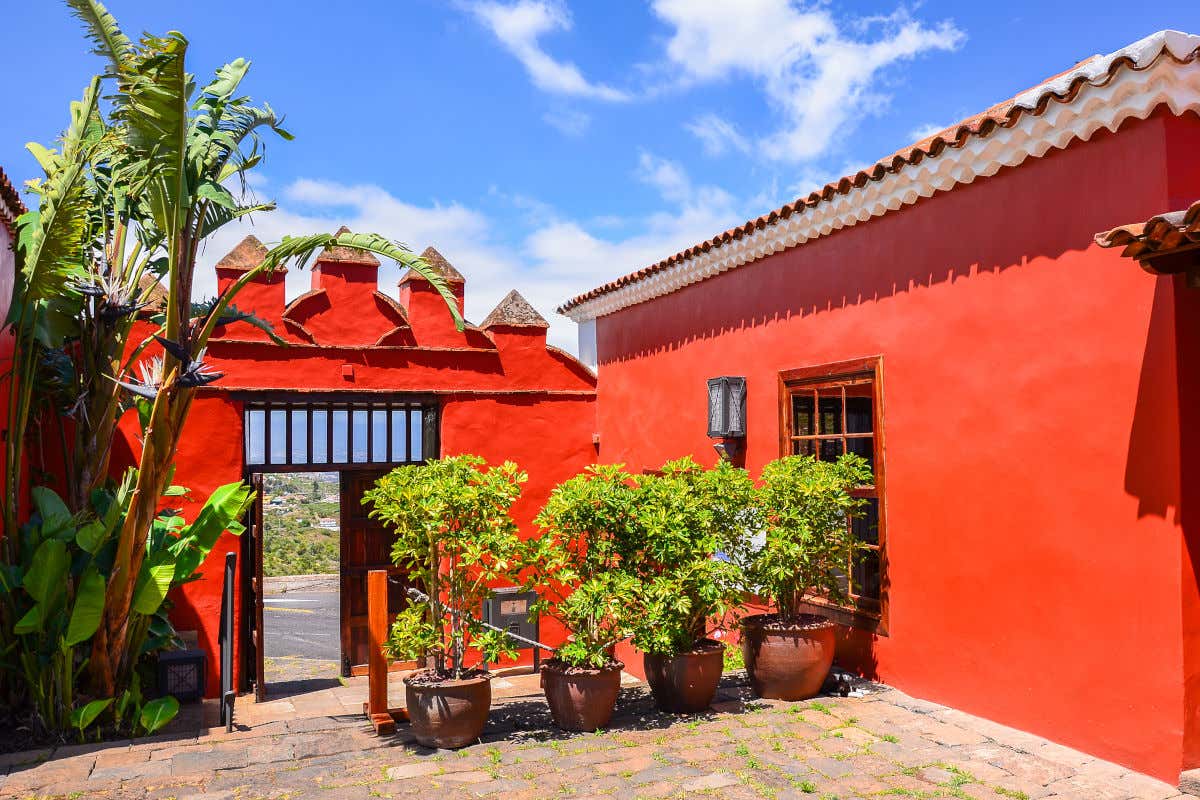
6. Enjoy Traditional Canarian Architecture at La Orotava
La Ortova is one of Tenerife’s most important and best-preserved historical centres, with a history dating back hundreds of years, and plenty of fantastic architecture to show for it. The finest example of such architecture is the gorgeous Casa de los Balcones, an architectural gem of the 17th century. This manor house features incredible, intricately carved wooden balconies made from local teak wood (pine) as well as a traditional Canarian patio, which features more stunning craftwork. Today, the house is home to a brilliant museum, which provides fascinating insights into Canarian customs and traditions. Visit the Casa de los Balcones for yourself, with Civitatis!

La Ortava itself has much more to offer as well. Going for a wander in the almost perfectly intact old town is truly like stepping back in time. On your wanderings, you’re likely to come across more grand architecture, like the Municipal Palace and the church of La Concepción, Victoria Gardens, and superb views of Mt Teide. Make sure you don’t miss the best bits (and learn a bit more about the town) on this La Ortava walking tour!
7. Check out the Hotels in Puerto de la Cruz
While there are lots of great places to stay in Tenerife, Puerta de la Cruz is where most tourists will stay on the north side of the island. In fact, this city in particular has been a popular place to stay among tourists since the 19th century. However, there’s a lot more to Puerto de la Cruz than hotels!
The Old Town of Puerto de la Cruz is the beating heart of the city, dating back to the 16th century. Plaza del Charco is a particularly pleasant part of this area of the city—a gorgeous square filled with greenery, featuring fantastic restaurants and cafés. For architecture, you should definitely pay a visit to the Anglican church (and cemetery) as well as the churches of la Peña de Francia and San Francisco.
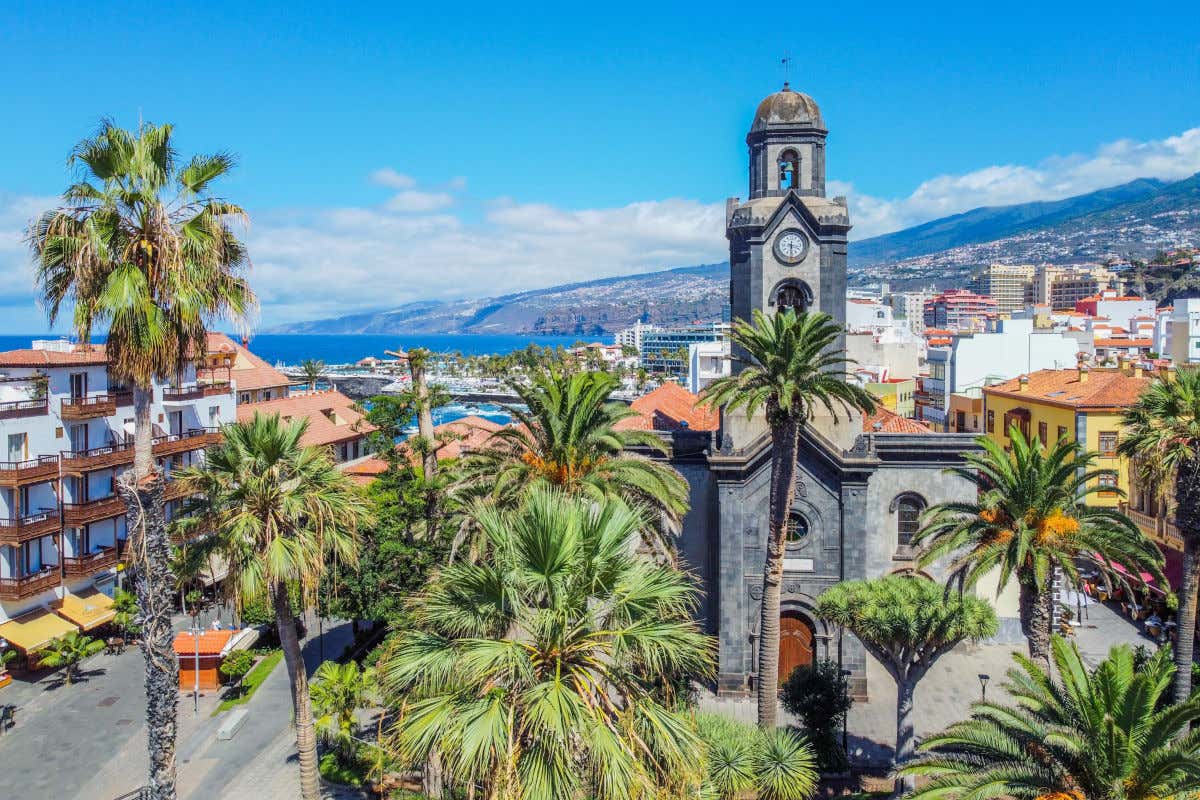
8. Meet Your Favorite Animals at Loro Parque
If you are travelling with your family, you may be wondering what to do in Tenerife with children… Buying a ticket to Loro Parque is one of your best bets. Loro Parque is the Spanish for ‘Parrot Park‘—though there’s much more to this zoo than that. Located in Puerto de la Cruz, this zoo is home to a wide range of animals: jaguars, killer whales, dolphins, gorillas, tigers, sea lions, sharks, seahorses, penguins, flamingos…
Loro Parque also has restaurants, a picnic area, a children’s playground, and auditoriums for animal shows. What’s more, the park is responsible for the creation of Loro Parque Fundación, a foundation that is dedicated to the promotion of animal research and conservation.

9. Marvel at the Drago Milenario, a Symbol of Tenerife
Another of the emblems to see in Tenerife is the tree of Drago Milenario de Icod de los Vinos. This spectacular specimen measures 68 ft (20 m) in height and 150 tons in weight and is estimated to be between 800 and 1000 years old. For over 100 years, this tree has been a popular tourist attraction and is well worth visiting.
You can see the ancient tree with a ticket to Parque del Drago, where the tree is located. Tickets are generally available at the ticket office, but we recommend buying your ticket in advance of your visit, so as to avoid queues at the ticket office.
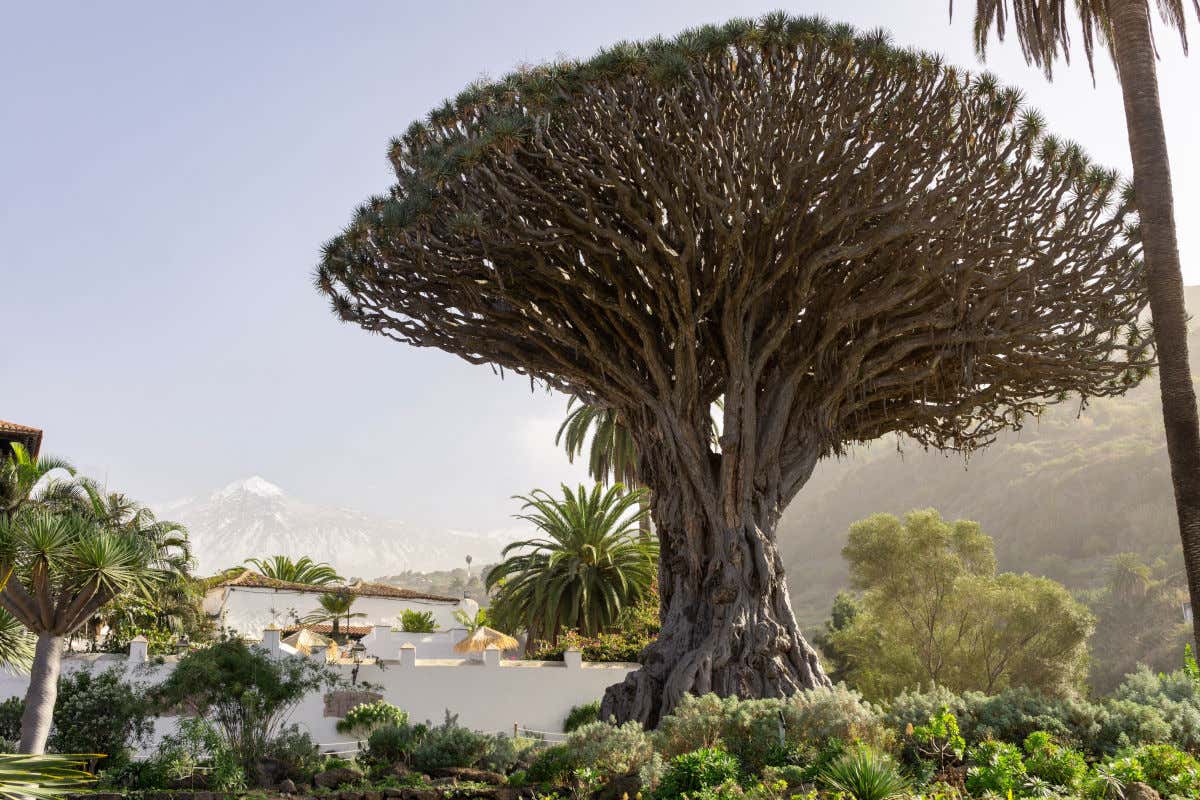
10. Descend into the Caves of Cueva del Viento
Cueva del Viento (Wind Cave) is a quick 15-minute drive away from El Drago and represents yet another natural phenomenon. Formed 27,000 years ago, Cueva del Viento is the fifth-largest volcanic tunnel in the world, and the largest in Europe. It would have been created by eruptions from the Pico Viejo volcano, which lies within the vicinity of Mount Teide.
The cave extends over 11 mi (17 km) in length, including three levels of passageways. Within the cave, a large number of fascinating fossils have been found, including a giant lizard and a giant rat, both of which were first discovered within these caves. There is also plenty of archaeological evidence to show that the island’s natives (the Guanches) had extensively explored the system.
To visit, bookings can only be made through the Cueva del Viento official website. Be sure to book your tour well in advance, as spaces are limited!
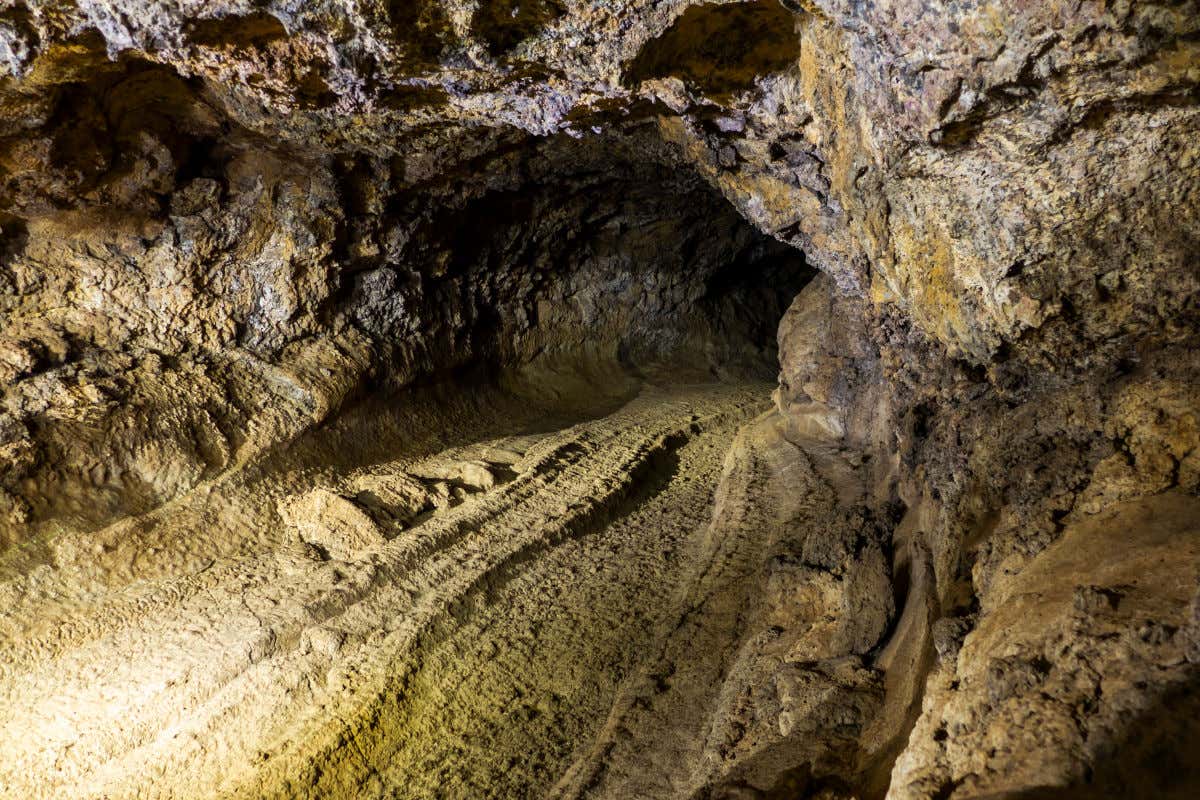
11. Wander Garachico, Spain’s Prettiest Town?
Recognized by the Association of the Most Beautiful Villages of Spain as a top destination for rural tourism, Garachico is a must-visit in Tenerife. Once a bustling commercial hub, Garachico’s fate changed dramatically in the 18th century, when the Trevejo volcano erupted, devastating its port and bringing an end to the town’s golden age. Today, Garachico’s cobbled streets and stunning natural pools along the coast are its main attractions.
While you’re there, be sure to explore the town’s historic gems: San Miguel Castle, the Church of Santa Ana, and the Santo Domingo Convent. For breathtaking views, head to the Emigrante viewpoint, where you’ll be treated to a postcard-perfect view of the village and the striking Roque de Garachico—a striking island just off the coast.
There’s plenty to do in Garachico—have a look at more activities in Garachico with Civitatis, and see the town for yourself!
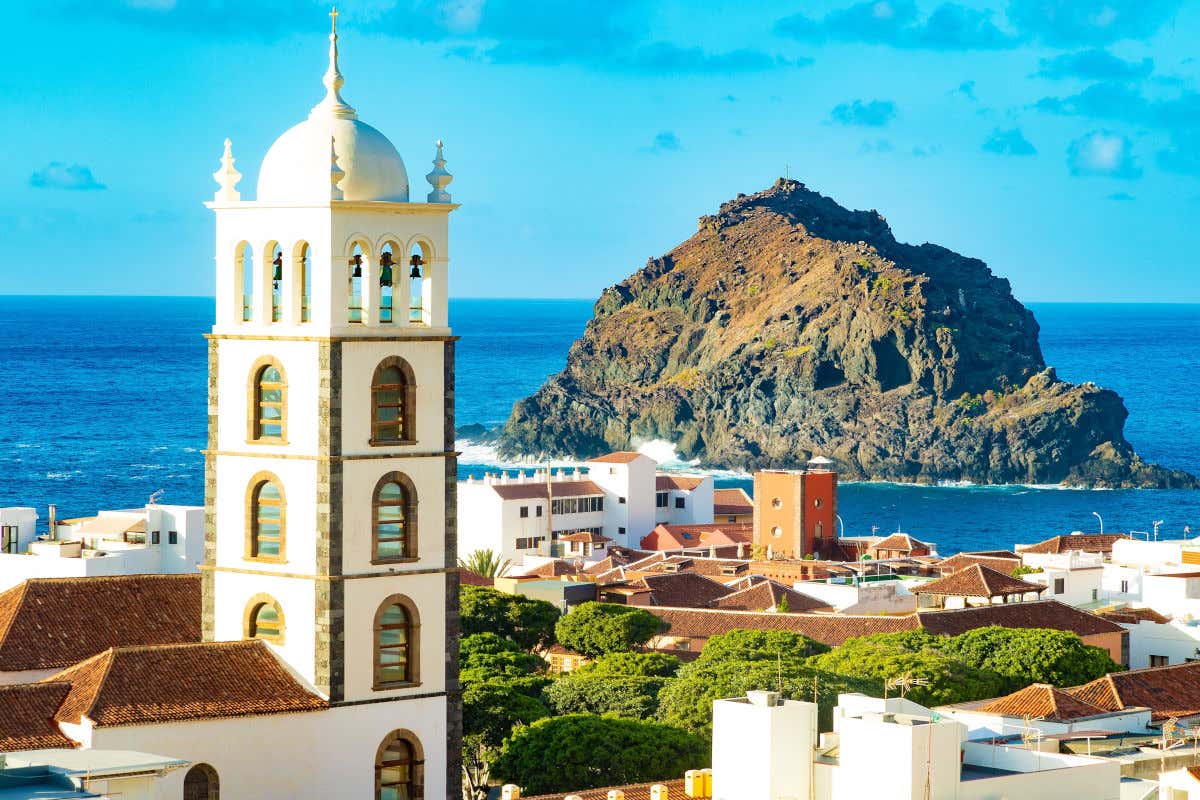
12. Journey to Punta de Teno, Tenerife’s Most Western Point
Punta de Teno, located on the western tip of Tenerife in the Canary Islands, is home to an even more stunning natural landscape. Known for its rugged coastline, crystal-clear waters, and dramatic cliffs, this natural gem offers unforgettable views of the Atlantic Ocean and the majestic cliffs of Los Gigantes (more on that later). If you’re looking for a sportier holiday, you’ll enjoy Punta de Teno.
On this Teno Rural Park hiking tour, for example, you’ll enjoy privileged views of the island’s westernmost point, including its stunning coastline. If you want to get out onto the water, check out this Punta de Teno kayak tour—sail out into the waters, enjoy incredible views of Los Gigantes and snorkel to your heart’s content!
If you’re primarily driving around the island, we recommend leaving your car at your accommodation for the day when you visit Punta de Teno. To avoid crowding, the roads to this part of the island are often limited or even cut off during the day. As such, the best way to get to Punta de Teno is via public transport.
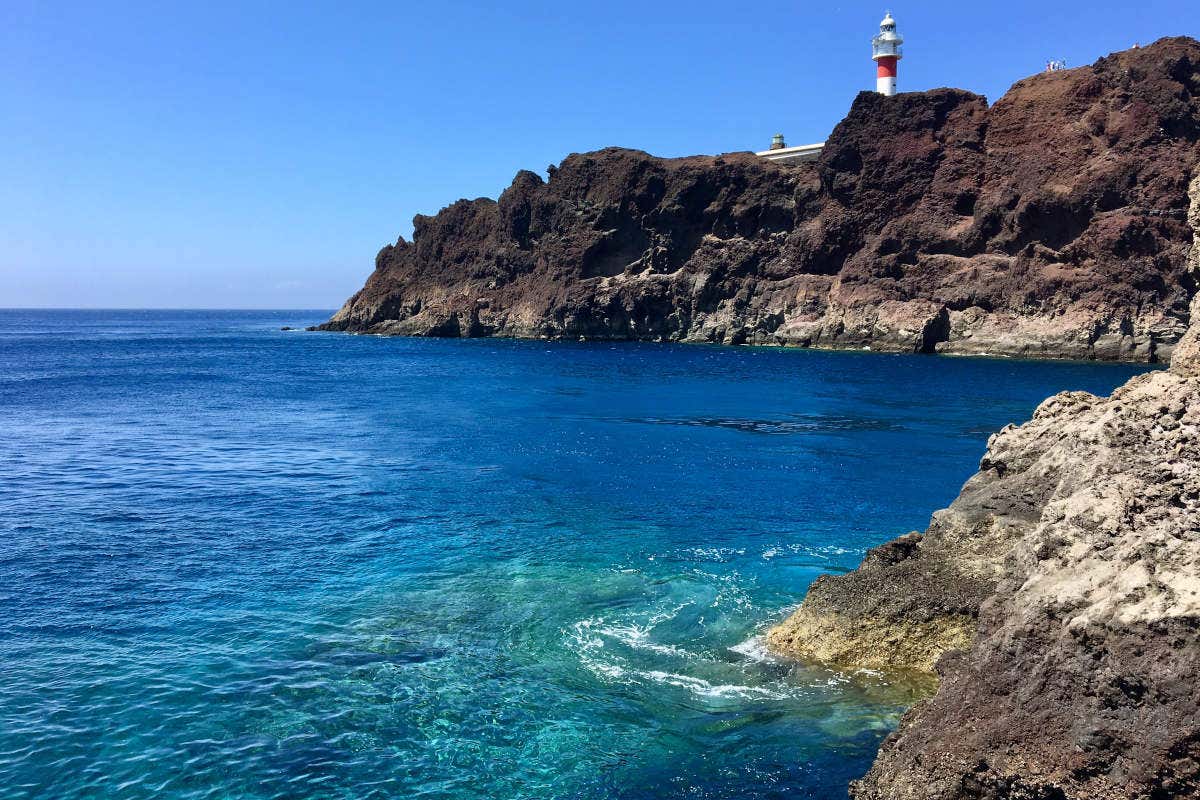
13. Head to the Basilica of Candelaria, the Most Important Church to See in Tenerife
Making our way away from the north of the island, our next stop is at the Basilica of Candelaria—home to the Patron Saint of the Canary Islands, and home to one of the most important pilgrimage sites on the islands. In fact, every August, thousands of tinerfeños and foreigners alike walk to the Basilica, from all over the island—some people camp for multiple nights along the way.
The Basilica itself is dedicated to the Virgin of Candelaría, a statue depicting the Black Madonna. Legend has it that the statue was discovered on the island’s shores and thought to represent a symbol of divine power. In this area, you’ll also see bronze sculptures depicting the nine kings (menceys) who ruled the nine aboriginal Guanche kingdoms. Visit to catch a glimpse of this incredible blend of Indigenous Guanche traditions and Catholic beliefs, which makes this site a unique part of Tenerife’s history
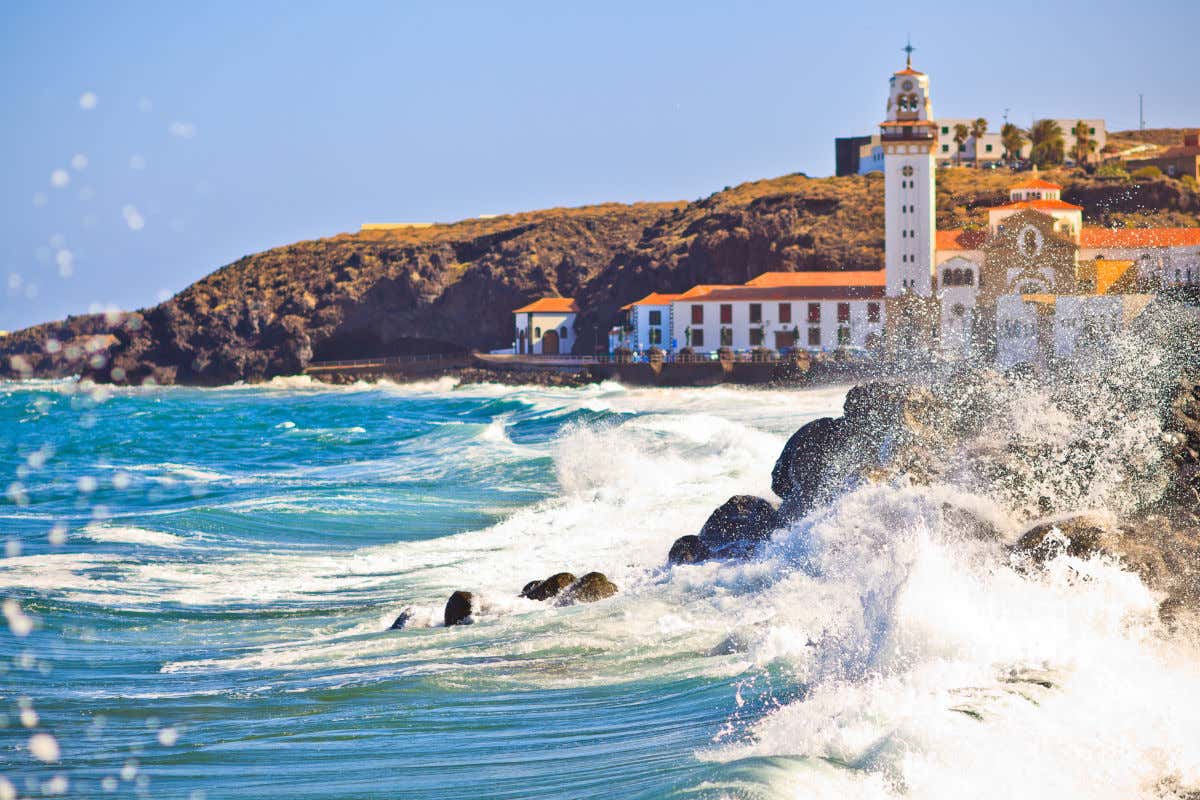
14. Grab a Ticket to the Pyramids of Güímar
The Pyramids of Güímar are an exceptional, highly curious complex, consisting of six terraced structures built from lava stone. Fascinatingly, the structures are perfectly aligned with the winter and summer solstices. While it had long been believed that they were built by the native Guanches, research indicates that they were likely built in the 19th century. However, why exactly they were built remains a mystery.
See them for yourself by grabbing a ticket to the Pyramids of Güímar, which includes a visit to the Casa Chacona Museum (which explores the history of the site), as well as the Sustainable Garden and the Poisonous Garden.

15. Climb to the Summit of Montaña Roja
One of the most breathtaking natural landmarks in southern Tenerife is the Montaña Roja Special Nature Reserve, located near the vibrant coastal village of El Médano. This striking volcanic cone stands 561 ft (171 m) tall, rising dramatically from the beachfront. If you wish, there’s a path which brings you right up to the top!
Once at the top of Montaña Roja, you’re rewarded with sweeping views of Tenerife’s golden sandy beaches. These shores are a paradise for kitesurfers, windsurfers, and surfers, thanks to the area’s famously strong winds. In fact, El Médano’s constant breeze has made it a hotspot for water sports enthusiasts and the proud host of the World Windsurfing Championship for several years.
If you’re craving both a scenic hike and a front-row seat to some serious wave action, Montaña Roja is the perfect destination to soak up Tenerife’s natural beauty and adrenaline-fueled beach culture! Get in on the action for yourself on this South Tenerife jet ski tour with Civitatis!
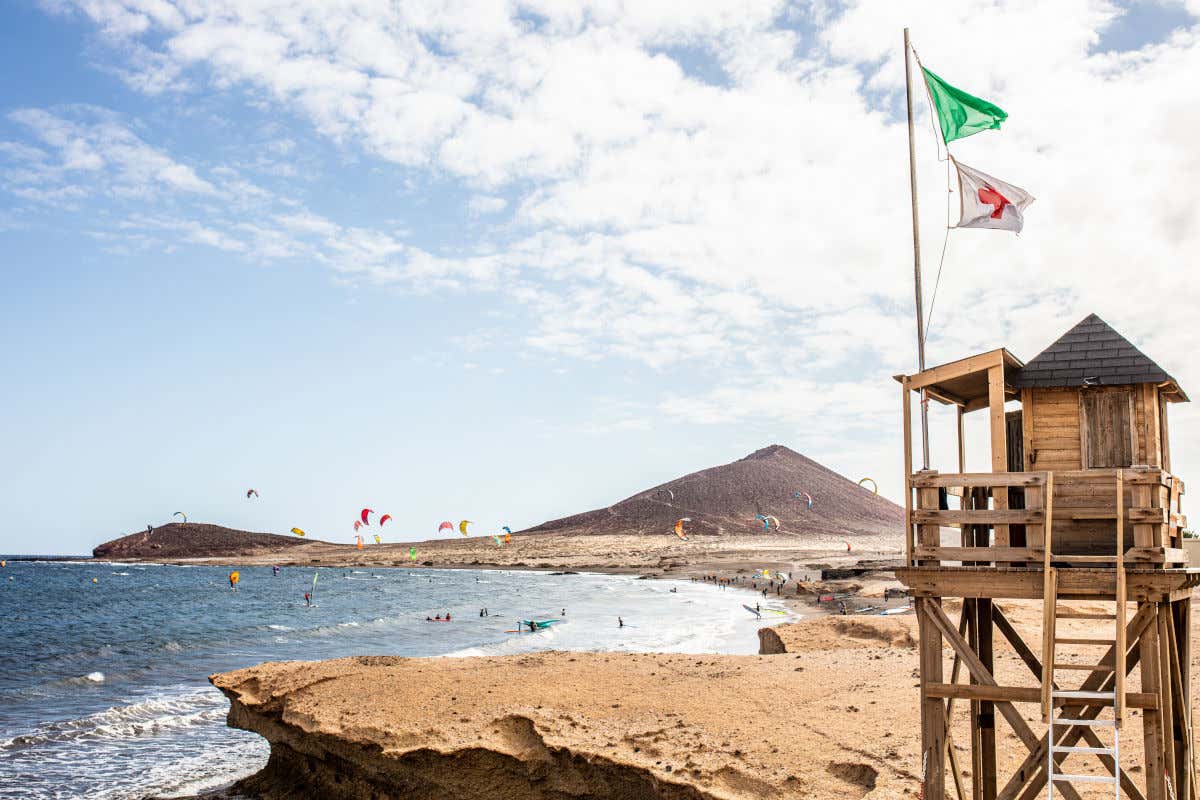
16. Soak in the Sun at Los Cristianos/Playa de Las Americas
Just as most tourists staying in the north of the island will choose Puerto de la Cruz, Arona is the most popular area to stay in the south. In Arona, Playa de las Americas and Los Cristianos are the two main hotspots, home to a fantastic range of hotels for you to choose from.
If you’re in search of a classic sun holiday, the average annual temperatures are around 18°C (64.4°F) and rainfall is generally low, making it the perfect destination for a sun and beach vacation. Although the waters of the Atlantic can be pretty chilly, the hot sun at your back means that you’re still able to enjoy a pleasant swim all year round. What’s more, you’ll have golf courses, superb restaurants, shopping options, and nightclubs at your doorstep… What are you waiting for?

17. Witness Barranco del Infierno, One of the Most Beautiful Waterfalls to Visit in Tenerife
Sticking around the south of Tenerife, we arrive at the Barranco del Infierno—Hell’s Gorge. Located in the highlands of Adeje, a hike through this rugged landscape culminates at a stunning waterfall which measures 656 ft (200 m) in height. Keep in mind that the hike will take around three hours and is considered a difficult challenge!
On the official website of Barranco del Infierno, you can find updated prices for the trail as well as the available schedules. As it is a protected natural area, spaces are limited. As such, be sure to book well in advance of your visit.
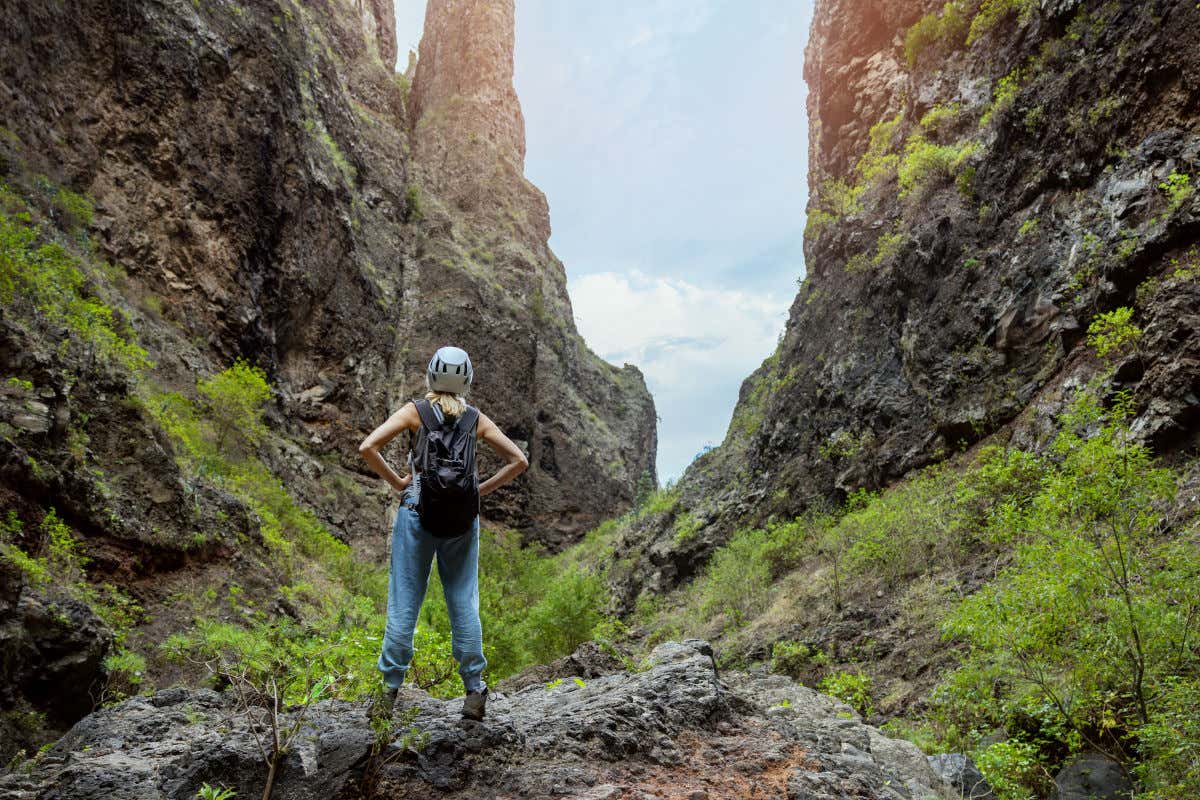
18. Feel the Rush at Siam Park: One of the World’s Top Water Parks
Did you know that Tenerife is home to the best water park in Europe? Siam Park, opened in 2008, has several world records in its history. Among them is the pool with the highest artificial waves in the world and the longest lazy river.
Within the park, you’ll find something for everyone. The park is family-friendly, but there are also plenty of options for adults. You have the Tower of Power, a 92-ft (28-) slide which reaches speeds of 50 mph (80 km/h). Our favorite, however, is the Dragon, a group ride which includes a toe-curling 33-ft (10-m) drop—watch your friends scream as you go down the slide!
On our website, you can grab a ticket to Siam Park or opt for the combined ticket that includes access to Siam Park and Loro Parque. Both parks are open 365 days a year—fun guaranteed!
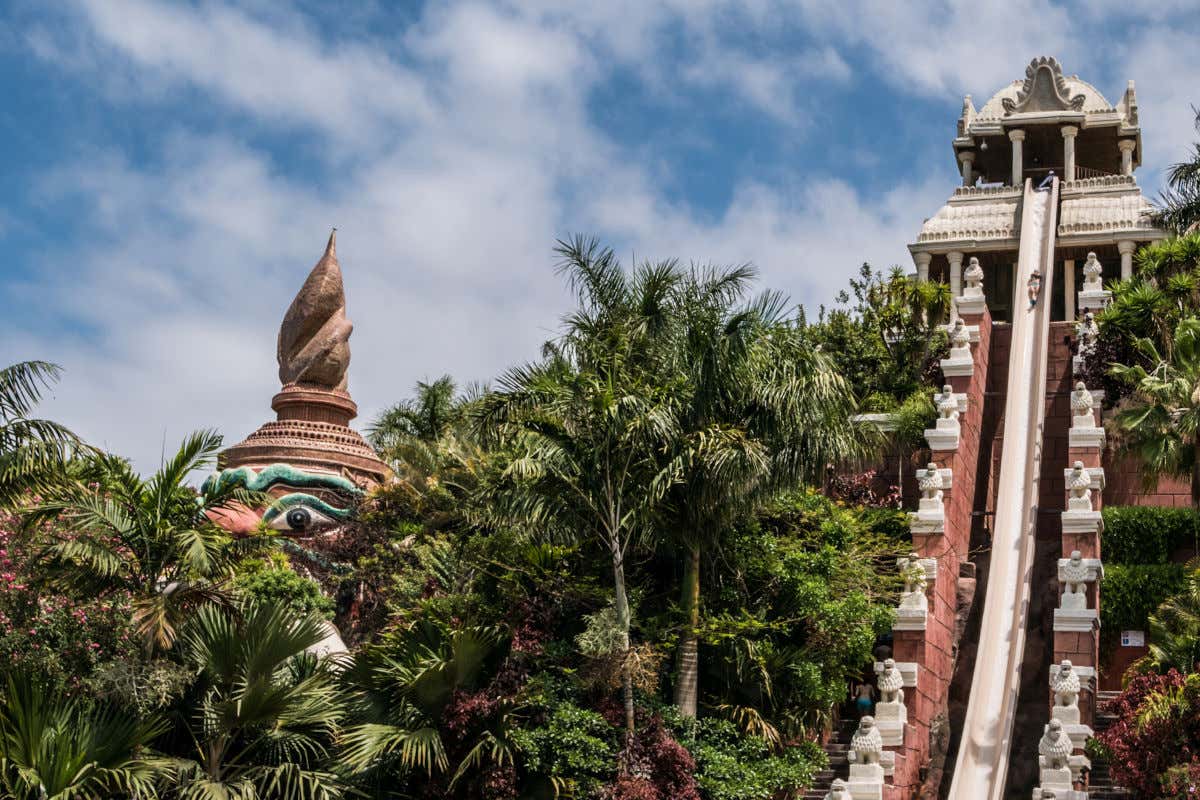
19. Marvel at Los Gigantes Cliffs
The stunning Los Gigantes Cliffs are yet another example of Tenerife’s incredible landscape. These coastal cliffs reach heights of up to 2,000 ft (600 m) and were called ‘Hell’s Walls’ by the Guanches. Although they are located on the northwest coast, between Buenavista del Norte and Santiago del Teide, they are usually visited from the south of the island, due to the way that the main roads are laid out.
You can enjoy fantastic views of the cliffs from Los Guíos Beach, or the Archipenque viewpoint, for example. However, to see the cliffs in all of their glory, we highly recommend going on this cruise around Los Gigantes—as well as unparalleled views of the cliffs, you might just catch a glimpse of dolphins in the waters!
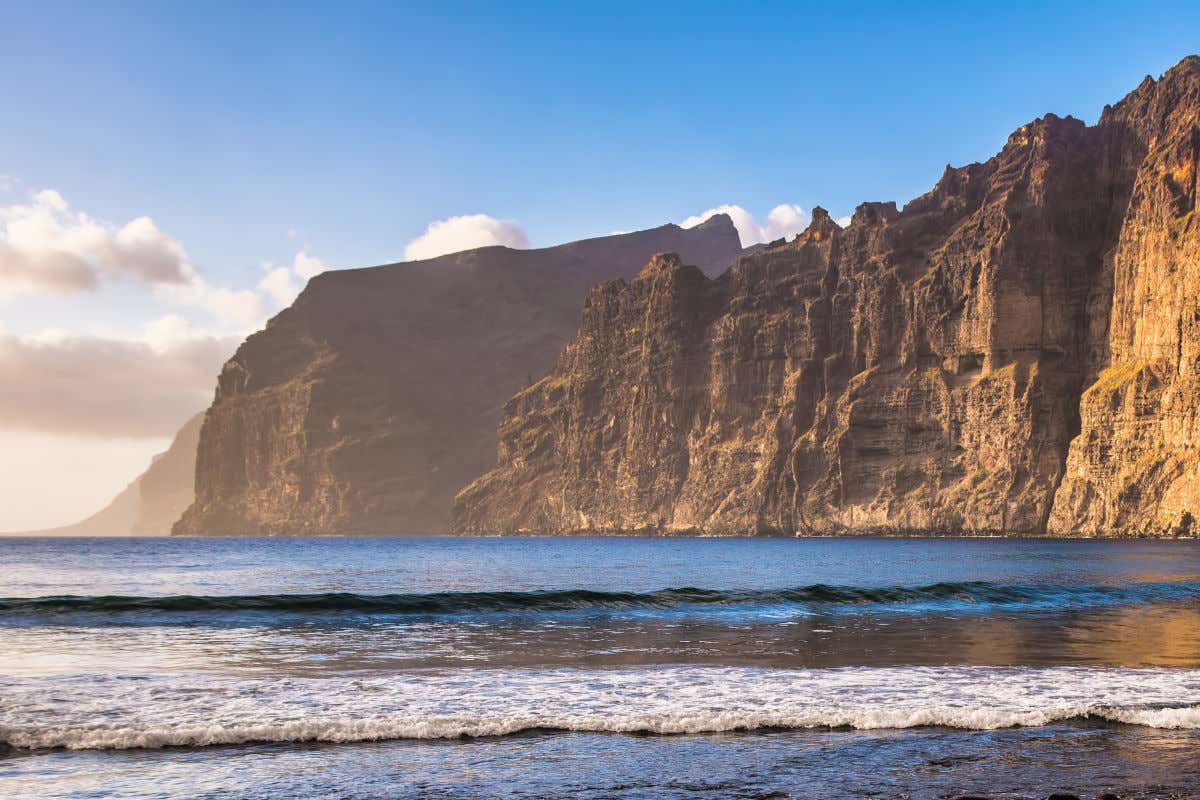
20. Discover Tenerife’s Remote Beauty at Masca
The final entry on our list is another gorgeous town in Tenerife. In fact, for us, Masca is one of the finest on the island, alongside the likes of Garachico in terms of its beauty. Unlike Garachico, Masca is a rural hamlet, located in Teno Rural Park. 2,460 ft (750 m) above sea level, this community is located in the mountains, far away from any of the resort towns in Tenerife. Its town centre is declared an Asset of Cultural Interest, home to great examples of the island’s traditional architecture, alongside incredible natural views. Discover it for yourself with this Masca free guided tour, or delve into the wild Teno Rural Park on this Masca ravine hike!
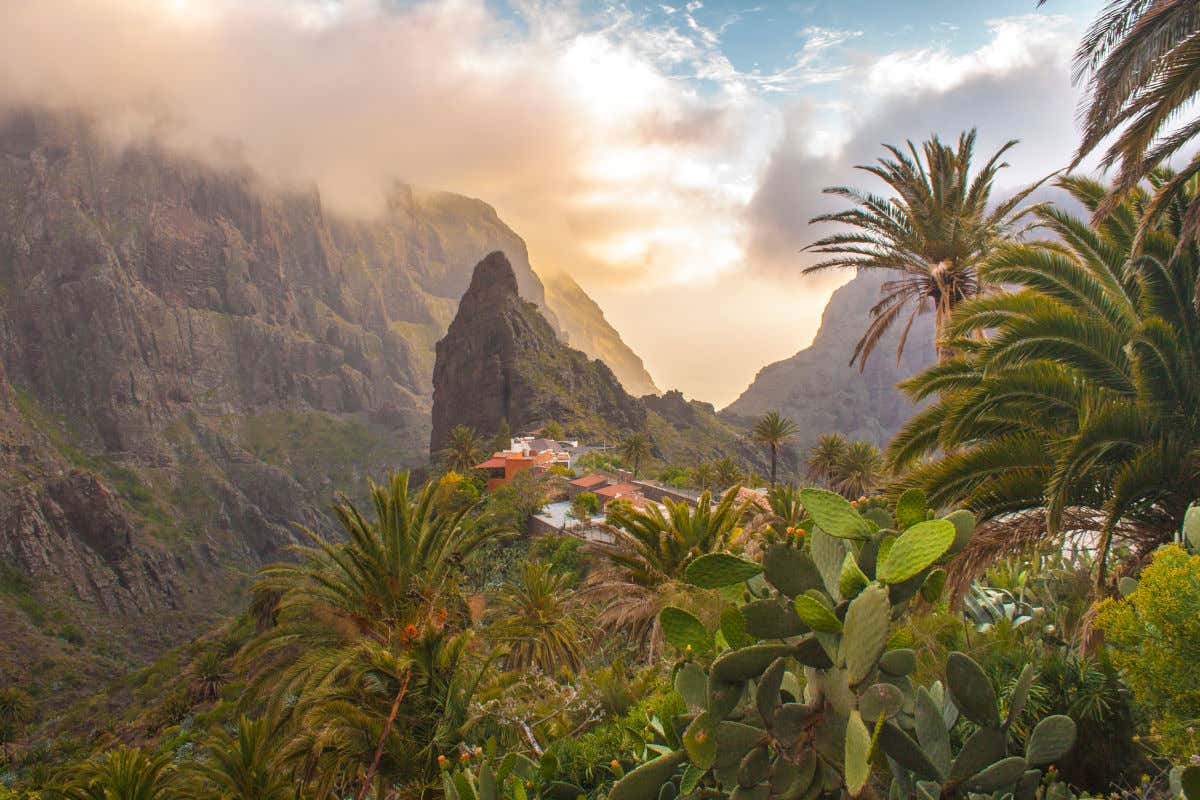
FAQs: 6 Things to Know Before You Visit Tenerife
What’s the Average temperature in Tenerife?
The average temperature in Tenerife ranges from 63°F to 75°F (17°C to 24°C), with December and January being the coldest months, and July through to September being the warmest.
Where is Tenerife?
Tenerife is the largest of the Canary Islands, which form part of Spain. It’s located quite a bit south of the mainland, in the Atlantic Ocean, on the northwestern coast of Africa.
What language is spoken in Tenerife?
Spanish! However, you might find that the Spanish used in Tenerife differs quite a bit from mainland Spanish. For example, in most of Spain, ‘bus’ is ‘aútobus’, and in Tenerife, it’s known as a ‘guagua’.
What is good to eat in Tenerife?
The cuisine of the Canary Islands is rich and varied. What’s more, eating out in restaurants is relatively cheap in comparison to other touristy areas of Spain. Of course, given its massive popularity amongst tourists, Tenerife can cater to all tastes. However, if you’re a foodie visiting, you need to try some of the local specialties! For one, you can’t miss the famous papas arrugadas—skinned potatoes, traditionally cooked in seawater and served alongside mojo rojo—a pepper sauce. Ropa Vieja is another Canarian specialty: a hearty stew consisting of shredded meat, potatoes, and chickpeas.
Tenerife is also pretty well known for its coffee! Barraquito (or, zaperoco as it’s known in the north of the island) consists of condensed milk, lemon, cinnamon, and coffee. Indulge in a barraquito as you rise with the morning sun like a true tinerfeño!
To gain a deeper insight into the cuisine of Tenerife, definitely check out this Tenerife food & wine tour. On this tour starting from Puerto de la Cruz, you’ll make your way around some of Tenerife’s finest guachinches (local taverns). Along the way, you’ll try local dishes, as well as locally produced wines!
What are the best beaches and natural pools in Tenerife?
You can’t visit Tenerife without a visit to the beach… right?
- Playa de Las Teresitas: one of the highest-rated beaches of Santa Cruz de Tenerife, boasting gorgeous white sand artificially brought in from the Sahara desert. With gorgeous, calm waters, this is a perfect family beach.
- Playa de Benijo: enjoy some of the best sunsets on the island—watch the sun disappear behind the rocks out at sea.
- Playa Jardín: one of the most popular black sand beaches in Puerto de la Cruz, this beach is divided into three coves and has a lateral breakwater to protect it from the waves.
- Natural swimming pools El Caletón: one of the most famous bathing areas of Garachico. It has areas of open sea and closed pools where the seawater enters and leaves continuously in a natural way.
- Charco Los Chochos: natural pools located in the municipality of Los Silos, in the north of Tenerife. Volcanic eruptions have created this natural seawater pool that offers a quiet dip in front of the sea, surrounded by walls of solidified lava.
- Playa del Duque: famous for its crystal clear waters, this sandy beach sits right outside of Adeje’s hotels. It has several restaurants and a promenade that connects with other nearby coves.
- Playa de Las Vistas: one of the largest golden sand beaches in Tenerife, this beach is located in Los Cristianos and has numerous services such as showers, toilets, umbrella/sun lounger rental, restaurants, water activities, and more!
- Playa de La Tejita: located next to the Montaña Roja is one of the nudist beaches of Tenerife. It usually has moderate to high waves—so bring your surfboard!
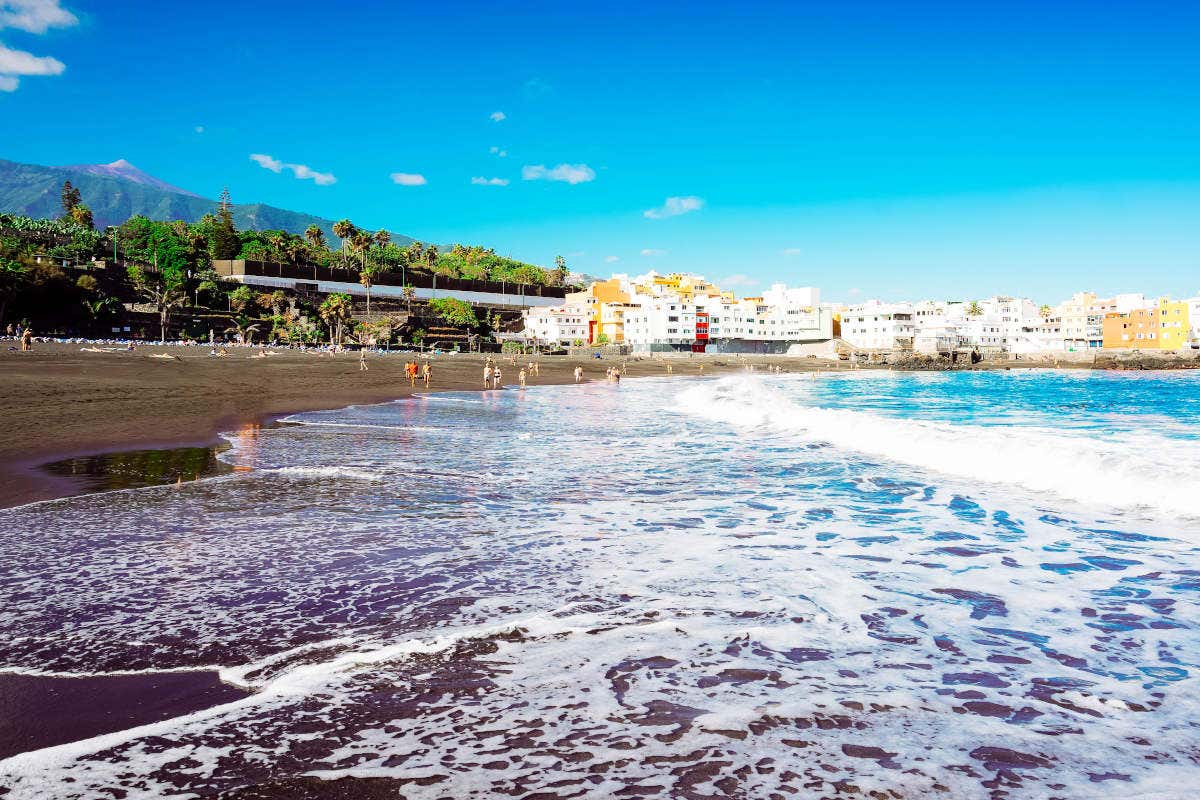
When is the best time to visit Tenerife?
Are you wondering what is the best time to travel to Tenerife? As mentioned, the weather in Tenerife is mild all year round. The climate is quite pleasant, whether in January, March, June, or December, with average temperatures around 68°F (20°C) all year round. However, the ‘high season’ in Tenerife usually coincides with Easter, July, August, and Christmas, when hotels and flights tend to have higher prices.
If you’re thinking of enjoying some of the island’s many trekking routes, the first months of the year and autumn are perfect. Temperatures are somewhat lower, and, in addition, the island will be a little greener than the rest of the year. When it comes to sun and beach tourism, summer is your best bet.

There you go! Looking for more ideas for what to do in Tenerife? Check out more activities in Tenerife with Civitatis to fill your trip! ¡Buen viaje!





